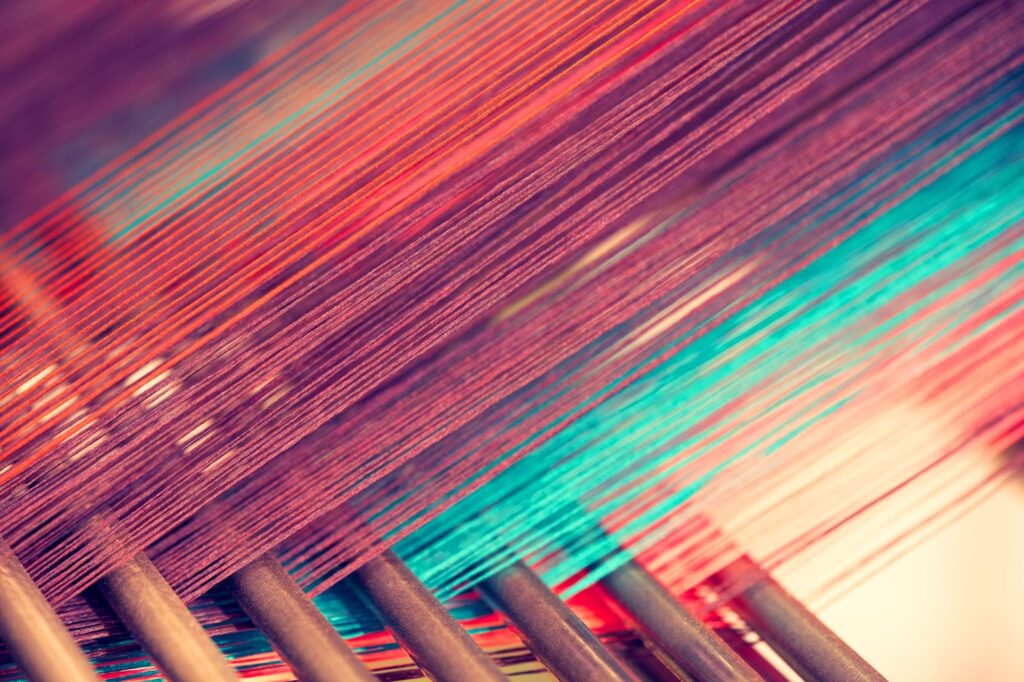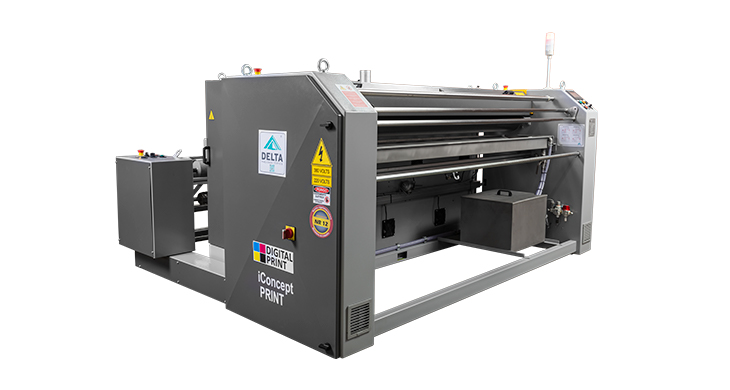The trends in the textile sector for next year can be summarized in three words: sustainability, technology and well-being. Knowing them is essential to build good budget planning for next year, and start investing in innovative solutions.
To help you ensure market prominence, we have listed the main trends in the textile industry for 2023. Check it out!
What are the trends in the textile sector for 2023?
Textile sector trends for 2023 follow changes in consumer behavior and market transformations. After all, in this industry, changes in consumption, inputs and economy directly impact the results of production.
Therefore, it is necessary to understand, at first, the current context to evaluate the trends and, therefore, start investing in them.
Therefore, here it is necessary to highlight that Brazil, according to Abit, is the largest complete Textile Chain in the West! This is because the country has everything from fiber production, such as cotton plantations, to fashion shows. Passing through spinning mills, weaving mills, processing plants, clothing manufacturers and strong retail.
This demonstrates the importance of the textile sector for the Brazilian economy. Added to this is the fact that exports alone generated US$1.06 billion in 2021.
Investment in the textile market, in 2020 alone, reached R$4.5 billion! Which resulted in a production volume of 1.91 million tons!
The revenue of the textile and clothing chain, in the same year, reached R$161 billion. With more than 24.6 thousand formal production units across the country!
The expectation is that these numbers will continue to grow as the application of innovative technologies and solutions advances. Especially because, analyzing exclusively cotton for 2023, the ABRAPA’s projection is that production will reach 3.1 million tons!
Finally, it is important to highlight changes in consumer behavior. Remember that he went through the pandemic period. In other words, currently, he is concerned with experience, enchantment, sustainability, comfort and technology.
These have been the lessons of the last two years. The expectation is that in 2023, he will be increasingly demanding regarding these attributes. The WGSN still expects these characteristics to remain until 2024.
Well-being
Given the current scenario presented, it is possible to state that well-being is one of the main concerns and trends in the textile sector in 2023.
Also according to WGSN, researchers who focus on studying post-traumatic effects state that people can develop positive feelings even, and especially, in difficult times.
Here it is crucial to understand how events are processed. Currently, the expectation is that the consumer will experience realistic optimism by 2024. This is because people are overwhelmed by the culture of overcoming.
To better exemplify this behavior: more than 20 billion people watched videos with the hashtag #selfcare on TikTok. Additionally, there are more than 60 million #selfcare posts on Instagram, according to WGSN.
And with the increase in the cost of living and pressures around sustainability, consumers will gradually become interested in products, services and environments that contribute to the search for self-care, that of others and their belongings.
WGSN calls this movement the “Care Economy.” The concept influences the repercussions in different segments, such as the fashion industry, interior design and beauty.
Therefore, here, textile products will need to be responsible, technological and capable of awakening emotions in consumers.
It is worth highlighting the note from WGSN, for the global “wellness” market. It is valued at over $1.5 trillion and expected to grow 5-10% annually.
That is, open up the opportunity to produce and sell products that meet care needs not only in the physical sphere, but also emotionally.
Sustainability and technological fabrics

Following the logic of the trend presented above, there is no way to fail to comment on the strength of sustainability. Because the expectation is that this will become an increasingly powerful concern among society, the textile market and consumers.
The WGSN points out that Generation Z is the most attentive to this issue. This is the generation that currently has purchasing power estimated at US$4.4 trillion. In other words, they are on track to become the largest economically active group in the coming years.
Therefore, the textile market has been concerned with developing new technologies to review the major impacts caused by the sector on the environment. At the same time as it meets the demand of consumers concerned about this issue.
The Textile Technology states that one of the trends in the textile industry, until 2032, are optical fibers, metals and various conductive polymers that will interact with the environment.
That is, these intelligent fabrics are capable of detecting and reacting to variations in physical stimuli, such as mechanical, chemical, thermal and electrical sources.
In addition to these, we can mention the development of natural and bamboo fibers, organic clothing, recyclable polyester, threads from PET bottles and other solutions that contribute to the elimination of waste and good use of natural resources.
All of this has been developed and fostered due to the growing inclination of companies to focus on restructuring their businesses to invest in manufacturing practices focused on sustainability.
Enhanced senses
The trends in the textile sector are all connected through technology, sustainability and well-being! Proving this statement, WGSN, cited by GBL Jeans, states that the color of the year 2023 is Digital Lavender.
It is a soft lilac that associates with serenity, creating a counterpoint to the more saturated and intense colors of digital environments. In other words, this demonstrates that behavior and consumption will be directly interconnected with technological life.
The Versi Têxtilalso cites other WGSN analyzes to address fashion trends for next year. Solutions in this sector also reference technology, nature and touch. After all, the post-pandemic consumer wants to feel everything they were prevented from feeling in recent years. And this includes embossed fabrics, for example.
Furthermore, shiny coatings, with animal skin textures and different applications are also trends. The goal is to develop a mesmerizing desire for surfaces.
Added to this list are veneered, patinated, holographic, laser engravings, micro weaves, wool dyed with waste, and artisanal and manual constructions, such as crochet and macramé. They all refer to nature, sustainability and conscious consumption.
Digital printing

Finally, one of the main trends in the textile industry will be digital printing. According to Economia de SC, this technology has arrived to change the sector’s scenario!
It all started with the fluctuation in the world economy that affected input prices. For example, the increase in the value of cotton went from R$4.7434 to R$7.0261, generating an increase of 48.12%.
Not only did this material suffer fluctuations, but also viscose, polyester and elastane. And it is in this context that the digital printing has established itself as a more profitable option for the sector due to its good cost-benefit.
The expectation is that this technique will remain and develop gradually. This is due to the fact that it does not generate waste of paint and fabric, and also guarantees more agile and value-added production. Therefore, the projection is that digital printing will generate US$3.75 billion by 2023.
At Delta Máquinas Têxteis, we offer modern, technological and more sustainable solutions for you who want to start investing in trends in the textile sector.
The Digital Print Preparator (PID100), for example, is an innovative pre-treatment machine. It is ideal for continuous and low-cost processes.
The PID100 performs roll-to-roll treatment with greater agility, facilitates the application of primer and guarantees vivid colors, high-resolution images and solidity in washing.
Are you curious and want to know a little more about the Delta portfolio? Then download our catalog for free by clicking here.


